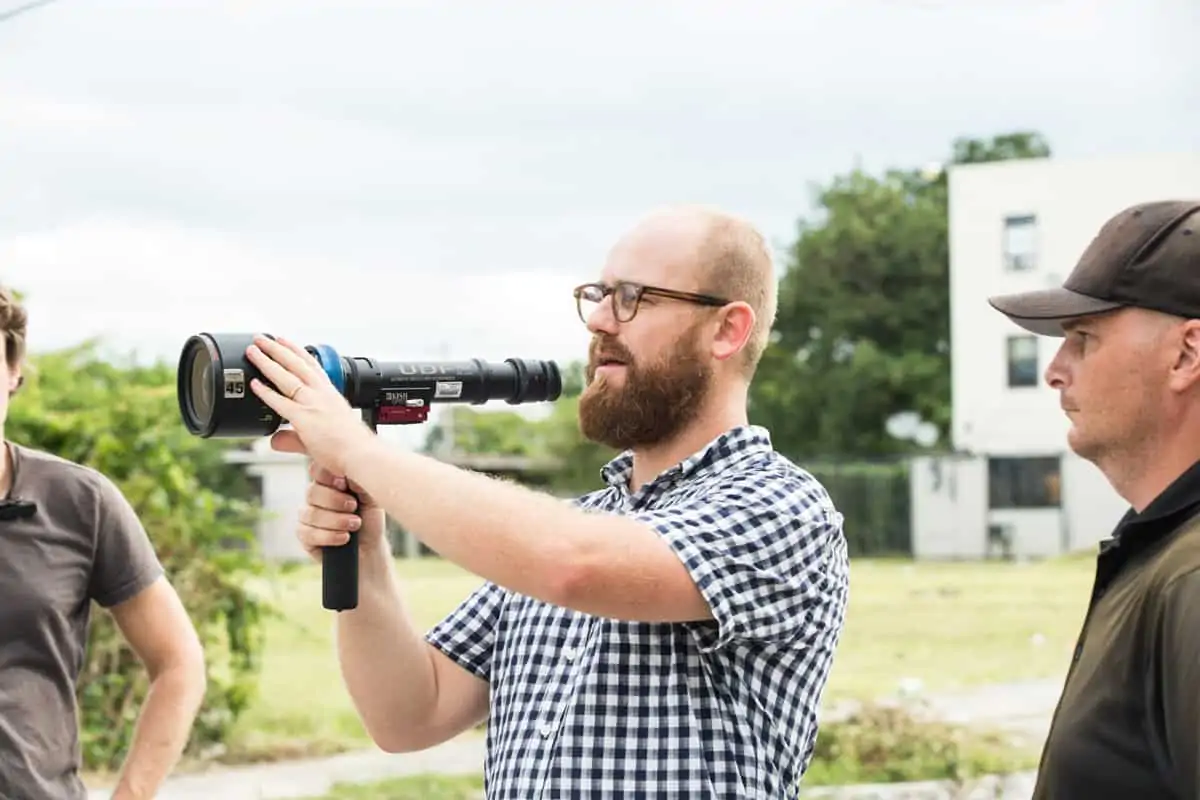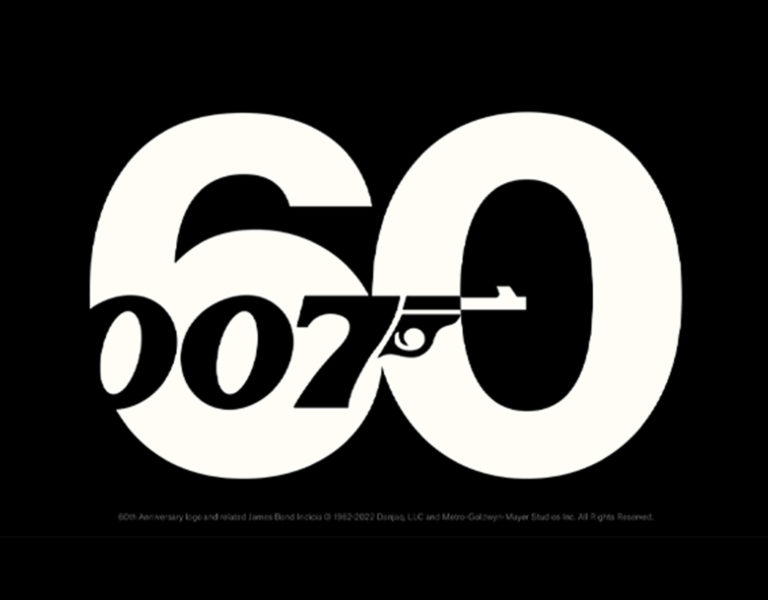Finding meaning
An agoraphobic Welsh translator gets a surprise visit from her brother’s friend in Keith Wilhelm Kopp’s tender two-hander. Kopp and cinematographer Mark James reveal their influences and inspirations for Translations, captured in black-and-white.
After years trapped inside her home by her agoraphobia, translator Stef (Kate Morgan-Jones) is confronted by her past when Evan (Alan Emrys), her late brother Liam’s friend, drops by to give her Liam’s journal. Set largely within the claustrophobic confines of Stef’s cottage, Translations is the culmination of a filmmaking collaboration spanning over a decade.

Keith Wilhelm Kopp, who hails from Portland, US, first met Mark James in Bristol in 2009, having both enrolled on the local college’s digital media production course. They shared a deep appreciation for film that stemmed from childhood.
“As a kid, I came from a working-class family, and the one access to storytelling and culture that we had was a three-dollar cinema,” Kopp recounts. “My dad was a big cinephile, so on the weekends we’d sometimes see three films at the cinema. It’s where my passion started.”
James, who grew up in Devon, adds: “I also didn’t come from a family that was very arty, but we did have a home video camera. My dad was so awful at the home videos that I had to step in! And that’s where I started, just playing around with the camera.”

Their paths diverged after finishing their studies; while Kopp followed a directorial path, James found his calling in cinematography. Years later, Translations has been the project that reconnected them. “It’s interesting because the shorthand stays. It was almost like no time had passed at all,” the director notes.
Kopp, who moved to the UK 15 years ago, spent a lot of time in Wales, and hiking and exploring its sylvan landscapes sparked his imagination. “I found a lot of similarities with the Pacific Northwest, like the forests and brooks – it felt very much like home. I found the Celtic culture fascinating and the language beautiful. Welsh voices are rarely heard in the American narrative, so once I became aware of this, I started looking around and found there is a diaspora in the US.”
Originally, Kopp hoped (and still hopes) to make a BFI Network-funded feature called Headwater, a modern-day Western set in Wales, but settled on Translations as his long-form debut. “During COVID, I was following lots of poets who are finding their voice through the medium of Instagram, and as a world we were experiencing themes of isolation and captivity. We wanted to explore that in a film and thought, ‘This is our time.’

“We gave ourselves 12 weeks, we got through seven drafts of the script and we shot the film in nine days. What really helped us with this film is that we didn’t just accept our limitations, but we treated them as artistic tools.”
In James, he found a cinematographer who was up for the challenge. “It was quite a task,” the DP admits. “On any shoot – even short films – time is always against you. Then suddenly having to do an 80- or 90-page script in a very short amount of time was quite challenging, to both scale up and work within that timeframe.”
Naturalistic delivery
When conceiving the feature’s look and mood, the pair discussed mumblecore films such as Frances Ha, as well as some early John Cassavetes projects. “We discussed certain aspects where we didn’t want it to be too dramatised and feel a bit more naturalistic in its delivery,” says James. “It was us spinning our limitations into our strengths, and working out a way in which we can develop a visual language that fits the film as well as fits with what we have at our disposal as well.”

On the decision to capture Translations in black-and-white, Kopp explains: “There is very much a story reason for the film’s greyscale. We have two people at the core of this film who are trying to break free from their past, and it felt like a really good reason to go and shoot black and white.”
He adds that it allowed them “much more control” in their filmmaking. “When you don’t have the budgets, when you don’t have the time, the conversations with the production designer turn to, what kind of textures and what kind of patterns can we include in this? I don’t know how many times we talked about a blanket that no-one’s going to notice on the couch.”
James agrees: “I like to play with colour a lot, in terms of mood and feel, so suddenly not having that does create a kind of an ambiguity to how you then perceive their dialogue and emotions. I think it’s quite an interesting form to play about with.”

The film was largely shot in a cottage in the Bath suburb of Lansdown, with a foray to Chartist Cave in Powys. James looked at how Danny Cohen BSC shot Room as an example of keeping a location interesting. “Normally it’s enough on a short film, just using a smaller space, but it’s especially tricky on a feature film,” he says. “It was a case of using the architecture to work out our visual language. In a lot of our early recces, we spoke about how we could enclose Stef in frames-within-frames, such as framing her within the doorway.”
“Visually, we’re trying to show perspective – we’re trying to be as close to Stef for the audience as humanely possible, so they feel like they lead on that journey,” notes Kopp. “We also have a lot of tight shots – not just because we’re in a very small space, but because we’re trying to show that she’s stuck and trying to break out.”
Focus on lenses
James opted to shoot Translations on the RED Scarlet and Sony CineAlta Primes. “The lenses worked really well for what we needed, because they were nice and clean and incredibly light, which made handheld a breeze,” he says. He was joined in the camera department by first AC Ross Wilson and second AC Jacob Crow, with the small team allowing them to be nimble in capturing the film in such a small space.

Thinking of lighting, James adds: “It was about the contrast between the dark and light and we didn’t want it to feel too harsh. It was more about the textures of the cottage and of their life, and about keeping it natural. Typically with black and white, it tends to lean on harder lighting but we wanted to go a bit more natural, so it was a case of working with practicals.”
Colourist Rosie Badder worked on the grade, with the film’s black-and-white visuals proving a surprising challenge. “It was quite a tricky job, because when you switch to black-and-white two colours that might have been quite different are suddenly the same,” James remembers.
Kopp loved the challenge of bringing Laurence Guy’s “meaty” script to the screen in just nine shoot days. “I’m especially proud of two things: one, I didn’t want to compromise the visual look we were setting up,” he says. “I had a lot of trust in Mark and knew he was going in the right direction. Also, being able to work with our actors and ensure that those moments of vulnerability and sincerity actually came across the way they were intended.”
“To know we can go out and shoot a feature film in nine days with minimal people, it’s testament to the notion that you can do anything,” adds James. “I’m really proud of how we all pulled together.”
Translations can now be viewed on Fawesome TV streaming platform. You can find it through their search function or through this link: https://fawesome.tv/movies/10652683/translations










